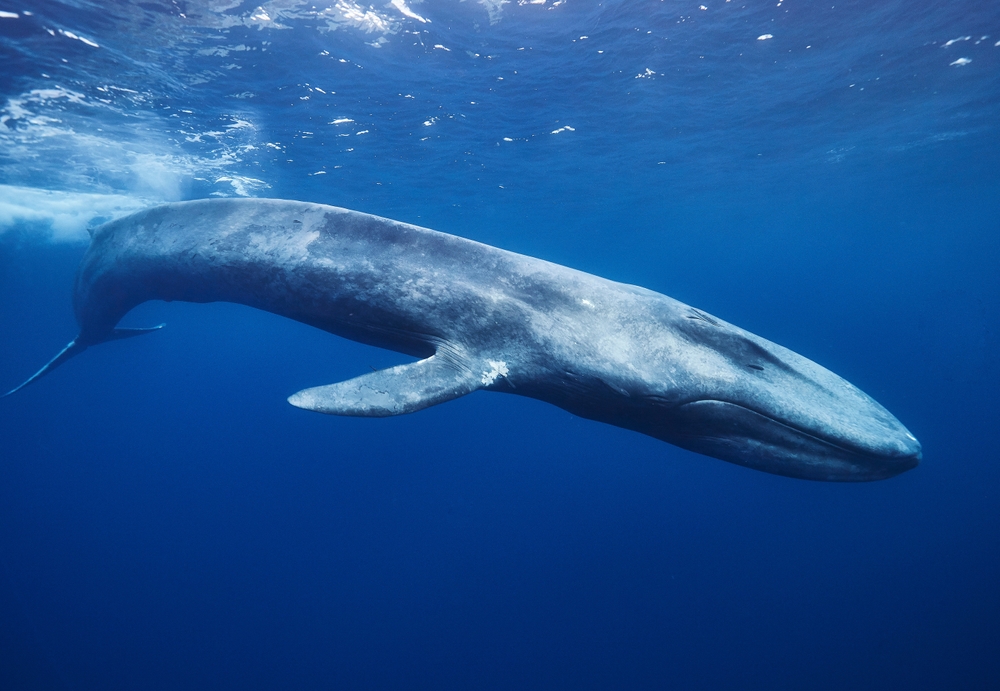
Some Baleen Whales Sing at Low Frequency to Avoid Killer Whale Attacks
www.discovermagazine.com
Some baleen whales, or whales that have plates in their mouths to help sieve out plankton, sing low-frequency songs to not only attract potential mates but also keep them safe from killer whale attacks. According to new research published in Marine Mammal Science by the University of Washington (UW), these low-frequency songs are part of a baleen whales fight-or-flight response.Whales in Fight or FlightBaleen whales are often more solitary, as compared to orcas, and include species like humpbacks, blue whales, and gray whales. As solitary creatures, they are easier targets for a pod of killer whales, especially when they have their calves. In a fight-or-flight response, baleens that typically use the fight method include humpbacks, right, gray, and bowheads. According to the study, the fight group of baleens have more navigable bodies. These whales also often tend to have their offspring in shallower coastal waters where they can group up, which can help when it comes to defense against killer whales.However, the baleens that exhibit flight blue, Brydes, sei, fin, and mink whales have more slender bodies, built for quick escapes, according to the study which was led by Trevor Branch, a professor of aquatic and fishery sciences at the UW. These whales typically have calves out in open waters so they can escape in any direction should danger appear.While studying baleen whales, Branch noticed a unique character trait about the flight group, and it all had to do with the sounds they made.Acoustic Crypsis, a Survival MethodWhales produce a hauntingly beautiful song to communicate with mates, mark territory, share the location of food, and find each other. But these songs can reach over 1,500 hertz, and are easy for killer whales to hear. For the fight group of baleen whales, they are prepared for conflict with an orca.But for the flight group, creating loud songs to attract mates is too great a risk for inviting predators as well. To combat this, Branch noted that the baleen whales in the flight group actually produce lower-frequency songs to prevent orcas from homing in on them. They produce a song thats around 100 hertz. A killer whale would need to be around a half mile away to hear this call.According to Branch, this is known as acoustic crypsis, and its a survival method that helps keep these baleens and the others they care about safe.These super-loud songs could expose them and their mates to killer whale attacks. And this is where acoustic crypsis comes in: singing at low frequencies that are impossible, or very difficult, for killer whales to hear, Branch said in a press release.Influential SongFor this study, Branch analyzed previous data on killer whale hearing abilities and ranges. Along with that, Branch also looked at the different sources of whale songs among baleen populations, how sound moved through the ocean, and which songs were the easiest to detect from killer whales.From the data collected, Branch determined that out in the open ocean, the sound landscape is governed by fear. Certain species of baleen whales the flight group have developed methods to keep their mates and offspring safe. By singing these low songs, they can find each other and live their lives.For the other groups of baleens, however, they almost seem proud of their loud voices, and are ready for whatever predator may come their way.Overall, Branch noted that each whales fight or flight method seemed to dictate every part of their life, from how they communicate to where theyre found to where they eat.It just never occurred to me that some whales sing low to avoid killer whales, but the more I looked at this, the more I realized that every aspect of their behavior is influenced by the fear of predation, Branch said in a press release. Read More: Blue Whales Chase the Wind to Hunt Tiny PreyArticle SourcesOur writers at Discovermagazine.com use peer-reviewed studies and high-quality sources for our articles, and our editors review for scientific accuracy and editorial standards. Review the sources used below for this article:NOAA. Why do whales make sounds?A graduate of UW-Whitewater, Monica Cull wrote for several organizations, including one that focused on bees and the natural world, before coming to Discover Magazine. Her current work also appears on her travel blog and Common State Magazine. Her love of science came from watching PBS shows as a kid with her mom and spending too much time binging Doctor Who.
0 Commentarii
·0 Distribuiri
·55 Views


